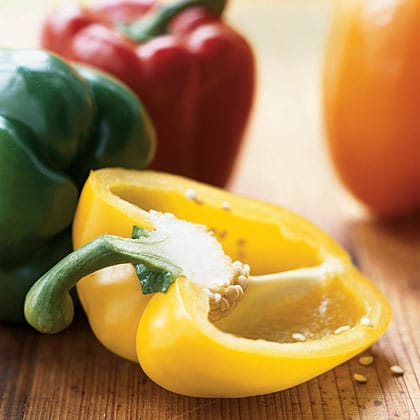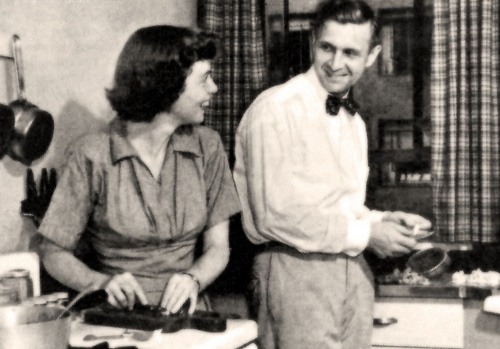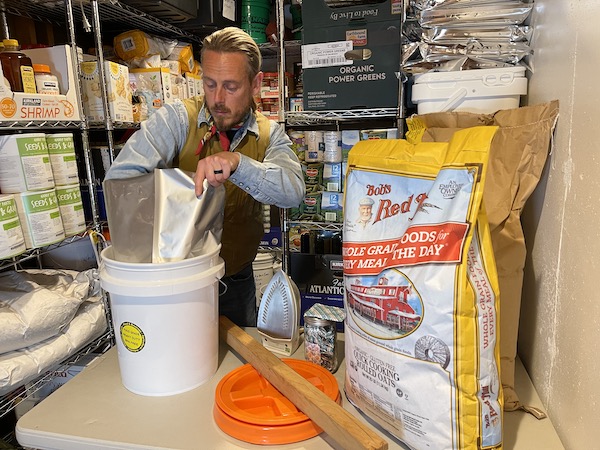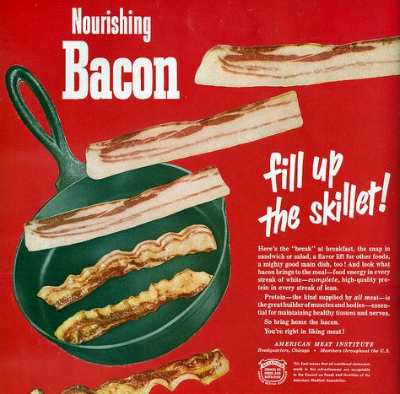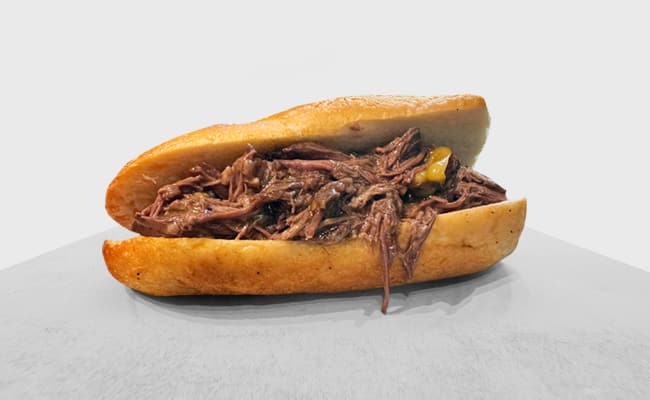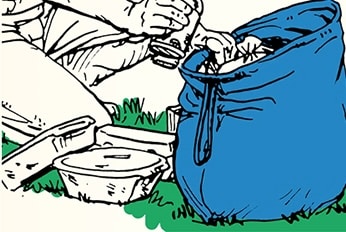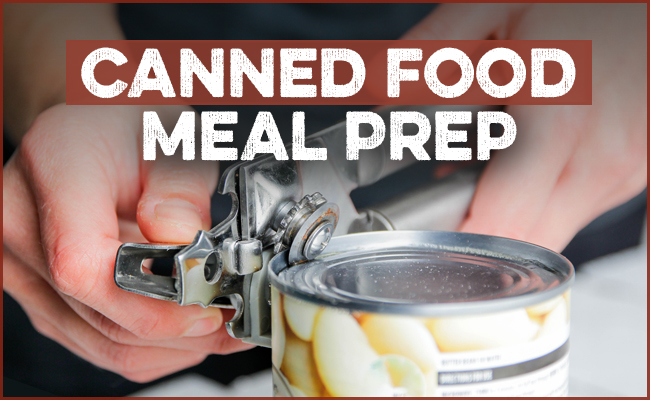
For my usual lunch meal prep, I cook a batch of chicken breasts, sweet potatoes, and green beans in my pellet smoker on Sunday, store them in the fridge, and then portion out a macro-friendly lunch each day. Sometimes I’ll also slow cook a big ol’ pot of beans to dig into throughout the week. Thinking about those beans . . .
But the other day, when I was at the grocery store going down the canned food aisle, I had a thought: Could I create high-protein, low-calorie meal-prep lunches using just canned food?
So I tried it. For one week, every lunch I ate came entirely from canned goods. No fresh meat or produce, no frozen veggies. Exclusively tinned food.
Here’s how my experiment went and what I learned.
The Pros of Canned Food Meal Prep
Canned food has a number of underrated advantages:
1. It’s pretty dang convenient. Canned food is the epitome of convenience. Everything is already cooked and chopped. You just open the can, dump it into a pan or bowl, warm it up, and you’re done. It can cut meal prep time down dramatically.
2. It’s shelf-stable. One of the best things about canned food is that it doesn’t spoil quickly. You can stock up on cans, and they’ll sit in your pantry for a year or more, waiting for you to use them. No more throwing fresh food away that you didn’t get around to cooking in time because you had a busy week. And you’re prepped for when global pandemics shut down the world.
3. It’s affordable. A can of tuna is less than a dollar and packs 27 grams of protein. Canned vegetables are also cheap. You can find cans of green beans, potatoes, corn, and more for under a buck. Canned foods cost about the same as fresh and frozen varieties, but can be considered an especially good deal when you factor in the time saved and the reduced risk of food waste.
4. It’s very macro-friendly. I was able to put together meals that were high in protein, low in fat, and moderate in carbs — all from canned foods. Think canned chicken with canned black beans and corn. Or canned tuna with canned potatoes and peas.
5. It’s still nutritious. There’s this idea out there that canned food is “dead” — that the canning process strips all the nutrients from the food. That’s not really true. While some water-soluble vitamins like vitamin C may decrease slightly, most nutrients remain intact.
The Cons of Canned Food Meal Prep
Despite its robust benefits, canned food does have its drawbacks:
1. Canned foods can be sodium bombs. Many canned foods are loaded with salt for preservation and taste. After my meals, I noticed some water retention and had difficulty getting my rings off my fingers. But there are ways to minimize this. You can buy reduced-sodium or no-salt-added versions of many canned foods. You can also rinse your canned food under water before using it, which can cut the sodium content by up to 40%.
2. Cans may use BPA linings. Another concern you’ll hear about canned food is BPA — a chemical once commonly used in the lining of cans and linked to potential health risks. The good news is that after consumer pushback, most canned food manufacturers have shifted away from BPA linings. But not all have. If this concerns you, check the label or the company’s website for info on their can linings.
3. The taste and texture are not always the best. I like the taste of canned green beans and corn, but canned potatoes and chicken are . . . different. I kinda felt like I was eating cat food when I ate my canned chicken. Don’t expect your canned food meals to taste amazing. Seasoning and Frank’s Hot Sauce will be your friend in making them more palatable.
3 Easy, Macro-Friendly Canned Food Meal-Prep Recipes
During my experiment, I tried out some canned-food-only “recipes.” Here are three I liked:
Chicken, Green Bean, and Potato Bowl

Ingredients
- 2 cans of 5-ounce chicken breast
- 1 can of sliced white potatoes, rinsed (to remove sodium) and drained
- 1 can of green beans, rinsed and drained
- Ground pepper
- Onion powder
Super easy meal to make. Just dump everything in a bowl, add some ground pepper and onion powder, and mix together. I ate all my meals cold, but you can also warm them up.
Macros
- Carbs: 55 grams
- Fat: 5 grams
- Protein: 52 grams
- Total calories: ~ 473
Cost: ~ $6
Southwest Chicken Bowl

Ingredients
- 2 cans of 5-ounce chicken breast, drained
- 1 can of black beans, rinsed and drained
- 1 can of corn, rinsed and drained
- 1 can of diced tomatoes and green chili
- Chili powder
Dump beans, corn, and tomatoes into a big bowl and mix together until evenly combined.
Dole out 200 grams of the bean and veggie mixture into a serving bowl. Top with canned chicken breast. Hit it with some chili powder. Mix together.
Top it with some hot sauce. You can eat it straight or put it in a wrap. I ate mine in a wrap.
Store your bean and veggie mix in the fridge and use it for other meals throughout the week.
Macros
- Carbs: 20 grams
- Fat: 5 grams
- Protein: 49 grams
- Total calories: ~ 320
Cost: ~ $6
Tuna and Chickpea Mix

Ingredients
- 1 can of 5-ounce tuna packed in water, drained
- 1 can of chickpeas, rinsed and drained
- 1 tbsp of light mayo
- Parsley
Place all the tuna in a bowl. Place half the can of chickpeas in the bowl. Add a tablespoon of light mayo and a dash of parsley. Mix. Add some Frank’s Hot Sauce to taste.
This canned food meal had the least amount of calories but was the most satiating, likely due to the fiber-packed chickpeas. I added an apple to bump the calories and carbs up for this meal. It sounds pretty basic, but this was my favorite meal out of all the ones I tried.
Macros
- Carbs: 22 grams
- Fat: 6 grams
- Protein: 32
- Total calories: ~ 270
Cost: ~ $2
Canned Foods: A Useful Backup, Not a Daily Driver
Given the pros and cons, after a week of eating canned-food-only lunches, would I make tinned victuals the foundation of my diet?
Probably not.
But after this experiment, I plan to keep my pantry stocked with canned foods for those weeks when I just can’t get it together for my big weekly meal-prep cook-up.
Cheap, nutritious, and convenient, canned foods are a handy tool for eating well — even when life gets chaotic.


